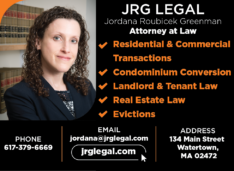Update on the Senate Commission
| . Posted in News, policy - 0 Comments
We have written previously about our seat on the Senate Special Commission on Housing. Here’s an update.
We have been advocating for a bipartisan program to be copy-pasted from Seattle, Insurance Against Homelessness or the Landlord-Tenant Guarantee. Representatives from other groups have been advocating for their own projects. Here’s a rundown of their “long-term recommendations,” at least as discussed at the meeting.

- Related Article: Final Report [May 2016]
Recommendations by Subgroup
The homelessness subgroup, chaired by Kelly Turley of the MA Coalition for the Homeless, is where we recommended Insurance Against Homelessness for the short-term. Kelly and her team are recommending that long-term we expand RAFT funding to the elderly and disabled. Currently RAFT pays up to $4,000 of back rent for families with young children, and runs out of funds nine months into every fiscal year (March or April). They say an ounce of prevention is worth a pound of cure. It makes sense that paying more for RAFT could avoid the much greater average cost of shelter.
The production subgroup, chaired by Rachel Heller of CHAPA, proposes that we require every community have multi-family zoning. According to her data, 200 of our roughly 350 municipalities have not allowed any new multifamily construction in over ten years. State-wide she says multifamily production is down 80% from the 1960’s. We want to know more about why communities object to new multifamily housing. Are they afraid of living next to low-income people? Are they worried about schools or roads not being able to adapt? Are they concerned that landlords won’t maintain the property? Answers to these questions might suggest a less heavy-handed approach than mandating multifamily zoning.
The offline housing subgroup is looking at public housing. They said that there are 1,000 vacant units out of 45,000 publicly owned. If that’s true, the public housing managers deserve a commendation for keeping their vacancy rates at or below what a private landlord might achieve. The major recommendation here seems to be to redevelop existing housing authority land to fit more people onto it. For instance, one federal project took housing for 1,100 people and turned it into housing for 3,000. There are 242 housing authorities state-wide with 300 to 500 sites that might be redeveloped.
The zoning group is co-chaired by André LaRoux of MA Smart Growth Alliance and Greg Peters of the Real Estate Bar Association. They propose that single family accessory dwelling units (ADU’s) be allowed “as of right.” This means that whatever zoning says, each single family owner would get to make an in-law apartment. We asked at the commission whether this meant two means of egress. If there were a fatal fire in an ADU, the zoning subgroup would be long gone, but we landlords would take the backlash, as we did when the Boston Globe’s Shadow Campus series tried to smear all landlords for the tragically irresponsible practices of a few. If this proposal doesn’t recommend two means of egress, it will probably not pass.
The gentrification subgroup wants to expand community land trusts. These are state-sponsored entities that seize property by eminent domain and then lease it to developers, like in Dudley Street, Boston. The developers must agree to keep rents low. It’s like the infamous Kelo v New London case in which private property was taken by eminent domain and given to another private entity on the basis of forecast economic improvement. Eminent domain was intended to be used only to establish public facilities that could not otherwise exist (e.g., defense and transportation infrastructure), but in Massachusetts there is no law prohibiting such seizure to eliminate blight or even offer low rent. This is the most far-left of all the commission’s ideas, which overall tends to lean left. We have serious reservations about community land trusts.
The support services subgroup, another group chaired by Rachel Heller, is recommending Family Self Sufficiency programs. They said they liked that such job training and education programs had the potential to increase income. They said the Achilles’ heel was that the programs were voluntary. We asked whether these programs were like A Better Life, the program being developed by Ray Mariano at Worcester Housing Authority. The subgroup members sighed and indicated that they disapproved of the “stick” he was using. But overall yes, their programs were like A Better Life with the carrot but no stick. The advantage of having both a carrot and a stick would be much better participation in self-sufficiency programs.
The preservation subgroup recommended expanding tax credits to owners who want to give away their buildings to a non-profit. The tax credits would be sellable on a tax credit market. For instance, you could donate a $1.5 million property, get a massive tax credit, and sell it to Bain Capital for 90 cents on the dollar. They claim owners could come out ahead compared to a market sale with real estate agent fees. The first landlord to whom we mentioned this idea said, “Over my dead body!” It’s not clear whether anyone would give away their rental property, which has a known value, in favor of a tax credit, which has an unknown value.
The foreclosure subgroup recommended “finding a way” to let non-profits buy 5,000 occupied “real-estate owned” properties currently being held by banks following foreclosure. The idea is to let the current occupants remain in the properties, instead of what normally happens when the building is emptied prior to sale. Since this is the second time non-profit ownership has come up, let’s address it:
Should Non-Profits Own Some of the Real Estate?
It’s not clear that the state has a compelling interest in facilitating non-profit ownership. It’s true that non-profits have all the political gloss of a pro-bono attorney. But if the non-profit keeps rents below market, their ability to finance capital improvements and operations must depend on taxpayer largess. And unlike a for-profit landlord, their incentive to increase or diversify revenue streams will be nil.
Truth be told, the state is not advocating for greater non-profit ownership. The non-profits are advocating for it. Viewed in this light, it seems more like “empire-building” than good public policy. It would seem far more prudent to let the risk of housing ownership remain in the private sector. The overwhelming majority of our housing throughout history has been produced privately. The primary reason we don’t have more, cheaper housing today is a government distortion of the market via zoning.
Zoning is the Elephant in the Room
Overall, it seems to us that zoning is the biggest issue preventing the creation of affordable housing. Everything else is in the noise. Zoning can require parking spaces even when new construction would be accessible from public transportation. It can prevent height even when the footprint is highly desirable. It can restrict density even if the units are safe. Zoning as it stands today is "fear of change" written into law.
If parts of zoning ordinances suddenly switched off and allowed the creation of more units where they’re wanted, landlords and developers would immediately subdivide to create new housing. The basic math is clear. A three-bedroom space renting for $2,000/mo could be turned into two one-bedrooms renting for $1,300/mo or more. The landlord would make enough money to finance the deal. And tenants would find cheaper apartments on the market.
All the ideas from the commission have been interesting, but we need to find a way to address zoning. If we can do that, we will have truly redefined housing policy for the 21st century. That, after all, is what the commission set out to do.
Read More: Affordability Crisis? Try Zoning not Rent Control




